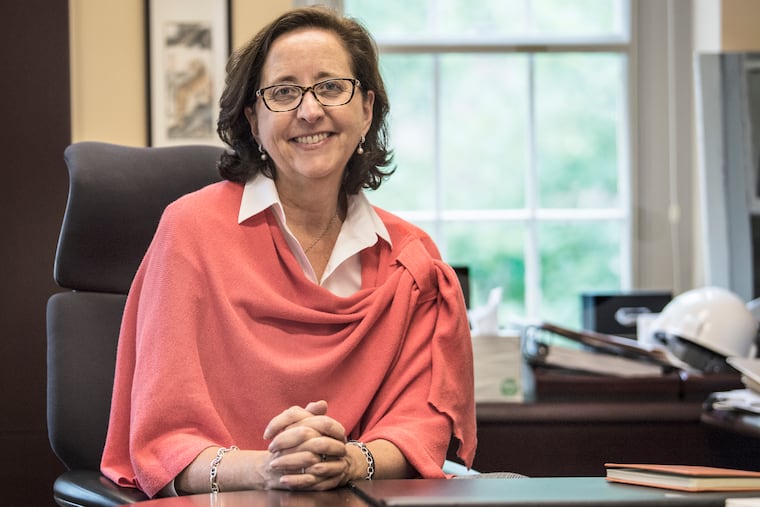As Harvard battles claims of bias in its admissions, Princeton recalls its own test
The federal education department conducted a lengthy probe of Princeton's admission process and concluded in 2015 that there was insufficient evidence to show it discriminated against Asian or Asian American students.

As Harvard faces claims of bias in its admissions process – inflamed this week by a U.S. Justice Department legal brief that endorses those claims – an official at Princeton, another Ivy League school, recently recalled how her university once faced similar scrutiny.
After two students claimed Princeton discriminated against Asian and Asian American students, one in 2006 and the other in 2011, the U.S. Department's Office of Civil Rights conducted an investigation that spanned nine years and concluded there was insufficient evidence to support the allegations.
"We were not discriminating," Janet Lavin Rapelye, Princeton's dean of admission, said in an interview last month. "It's hard to get into Princeton."
The federal civil rights office found that Princeton considered many factors, including race and national origin, in the admissions process and that the school also relied on other methods to ensure diversity in its class, in compliance with Supreme Court rulings.
"Here, OCR found that the university pursued a broad definition of diversity, for which race and national origin were among many other factors that were considered in the university's effort to assemble broadly diverse classes of students," the office said in a 2015 letter to Princeton president Christopher Eisgruber.
In the 20-page letter, the office gave a window into how students at one of the most selective universities in the country are admitted.
Rapelye cautioned that Princeton's case is different from Harvard's. While Princeton's review was conducted by the federal education department, Harvard has been hit with a lawsuit, which some surmise could become the next Supreme Court test on the use of affirmative action in college admissions.
Many colleges for years have been considering race as a factor in admissions, in an attempt to admit increasingly diverse freshmen classes.
And their efforts were bolstered by a 2016 Supreme Court case. By a 4-3 vote, the court upheld the University of Texas at Austin's argument that it needed to consider race to ensure diversity of its student body and that it had exhausted other means of achieving that goal. Many local schools, including Haverford and Swarthmore Colleges and Bucknell, Temple, and Drexel Universities, joined in court briefs filed in the case, arguing in favor of allowing the use of race as a criterion to enhance diversity.
In July, the Trump administration, according to the New York Times, said it would encourage colleges and universities to adopt race-blind admission standards, reversing policy under former President Barack Obama.
Just what impact that policy or the Harvard case will have on the national admissions landscape remains to be seen.
"We're certainly paying attention to what's happening," Rapelye said of the Harvard case. "It's a case with one of our peers. I can't really comment on it. It's about Harvard."
But she pointed to the review that Princeton underwent.
"It got our process pretty right," she said.
Only 5.5 percent of applicants were admitted to the New Jersey university this year. There was a time, Rapelye said, when students who cleared a certain bar could be pretty sure of admission.
"We passed that point a long time ago," she said.
With a freshman class of over 1,300 and applications that exceed 35,000, thousands of students with GPAs of 4.0 or above and high SAT scores are rejected each year. For the class of 2010, the university told OCR that 82 percent of the valedictorians who applied were not admitted, as well as more than 50 percent of applicants with perfect SAT scores.
The OCR letter outlined many of the factors that Princeton considers in admission, including: "standardized test scores, transcripts, and grades; teacher and coach recommendations; feedback from alumni interviews; expressed interest in and demonstrated commitment to a particular field of study or extracurricular activity; exceptional skills and talents, experiences, and background; status as a child of an alumnus or a university staff or faculty member; athletic achievement, musical and artistic talents; geographical and socioeconomic status, race, and national origin; unique circumstances, hardships endured, and what the university identified as "a range of other factors."
The office also said it found no evidence that Princeton used quotas or racial balancing in building its class, which isn't allowed. Harvard has been accused of racial balancing in the lawsuit filed by Students for Fair Admissions, which the university denies.
OCR in the Princeton case said its investigation found no grouping of applicants by race, no evidence that the school used a separate admissions process for different races or that Asian applicants were reviewed separately.
"OCR found no evidence that the university tried to cap or otherwise limit the number of applicants who would be admitted from any race or national origin group," the letter said. "OCR also did not find that the university engaged in 'patently unconstitutional' racial balancing…"
Students for Fair Admissions tried to gain access to the full OCR report on Princeton, but the university sued to block its release.
In addition to the case against Harvard, the group also is suing the University of North Carolina at Chapel Hill and the University of Texas at Austin in state court, claiming discrimination in admissions. More legal action could be coming.
"Students for Fair Admissions believes that any university that uses racial and ethnic classifications and preferences in admissions may be targeted for a lawsuit," said Edward Blum, the group's president.